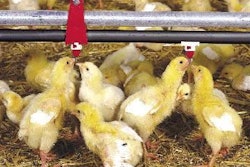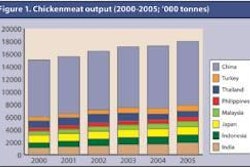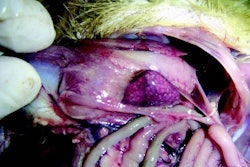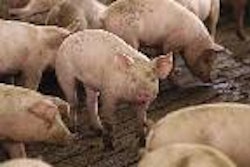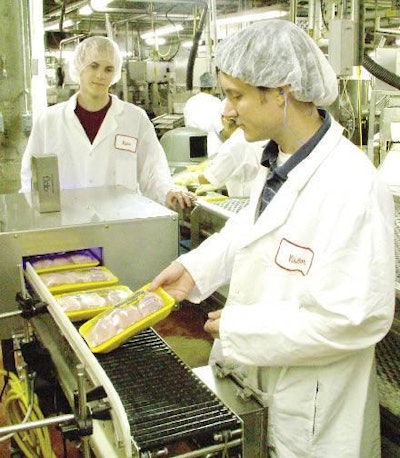
Georgia Tech’s innovative automated package inspection system is currently undergoing a field trial at Fieldale Farms’ processing plant in Cornelia, Georgia, USA. The field trial is the culmination of a two-year effort to automate the package inspection process.
Researchers worked with Cryovac Inc., a leading manufacturer of film and packaging material for the food industry, to design the system that takes into account the properties of packaging materials and combines them with imaging and other sensing systems. The result is an integrated system that automatically inspects the seals of over-wrap tray pack packages as they exit a heat-sealing machine.
According to Colin Usher, research scientist and project director, the primary goal of the field trial is to determine the detection accuracy of the vision algorithms in identifying seal integrity and label registration. The research team will also focus on determining the commercial viability of the prototype system by operating it in the plant and establishing its maintenance requirements. In addition, the team will determine the range of defects common to this application and the commonality of each defect type with one another.
At the test plant, the system is installed beside a conveyor that handles the output of packages from several sealing machines.
Double testing
Two types of tests are underway. The first involves screening product with artificial defect generation. This means that one of the packaging machines is modified to create a variety of defective packages that are introduced to the vision system to study detection accuracy. The second test can be described as regular production monitoring, in which the system is operated under normal processing conditions to record its performance. This helps to build a large database of information with which to determine defect rates and properties.
Mr Usher says that laboratory trials have shown the system to have a 100% success rate in identifying defects such as film tears in package seals with no false positives or negatives. The field trial will confirm if the system can maintain a perfect or near perfect accuracy rate. If so, it will give the industry a ‘tireless’ system to guard against poorly sealed seams.
“Also, an automated inspection system such as this removes some of the roadblocks that have kept plants from installing automated case-packing robots. With automated inspection and case-packing, the entire post-wrapping process can be fully automated,” added Mr Usher.
From the poultry industry’s perspective, Jerry Franklin, plant manager at Fieldale’s processing plant, says, “Benefits would come from our fine tuners and mechanics making adjustments to our ‘Ossid’ wrapping machines. I see this type of equipment as a portable device to move around in a department to check a wrapping machine for integrity of seal.”
Two US patents are pending – one on the inspection system and another on the special treatment developed for the packaging material. Funding for the field trial is being provided through a grant from Georgia’s Traditional Industries Program for Food Processing.
How the system works
The system is currently capable of inspecting packages that are as small as 15cm by 20cm in size and as large as 25cm by 30cm. (A design that can inspect packages up to 60cm in length is under development.) The viewing area includes both the top and bottom of a conveyor belt, creating an inspection tunnel. As packaged product passes through the tunnel, three cameras capture images of both sides, the entire bottom, and the top of each package. These images are then processed, and special vision algorithms identify defects such as film tears in the package seals. The camera located above the packages also looks for proper label placement. Packages with defective seals or improperly placed labels will be automatically rejected via a reject mechanism that will be added later. Once rejected, a package will be dumped into a re-work bin where it can be repackaged.
Georgia Tech Research Institute
This article is based on one published in PoultryTech, which is published by the Agricultural Technology Research Program (ATRP), Food Processing Technology Division of the Georgia Tech Research Institute (GTRI). ATRP is conducted in co-operation with the Georgia Poultry Federation with funding from the Georgia Legislature, USA.


